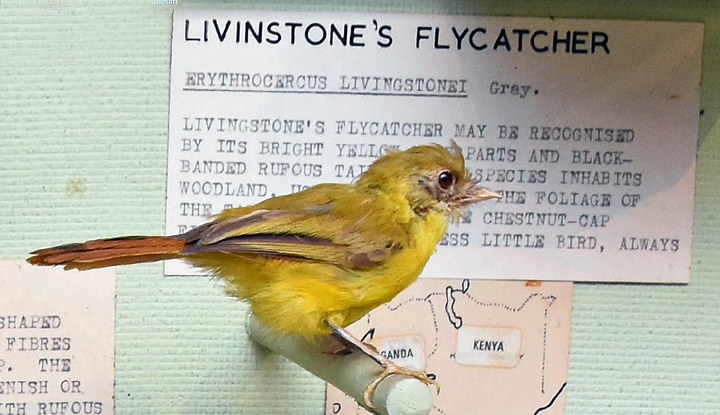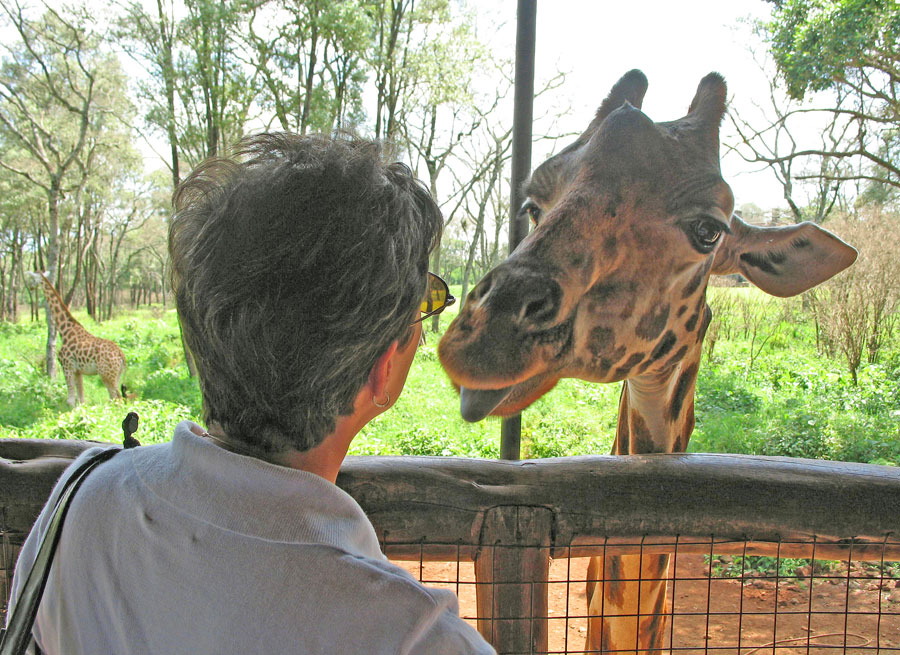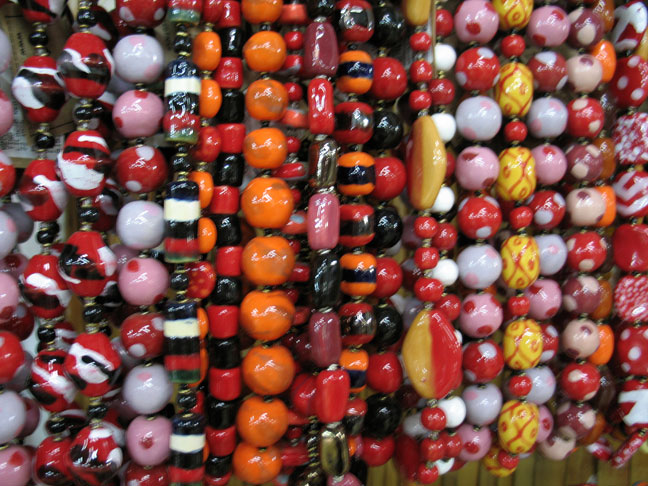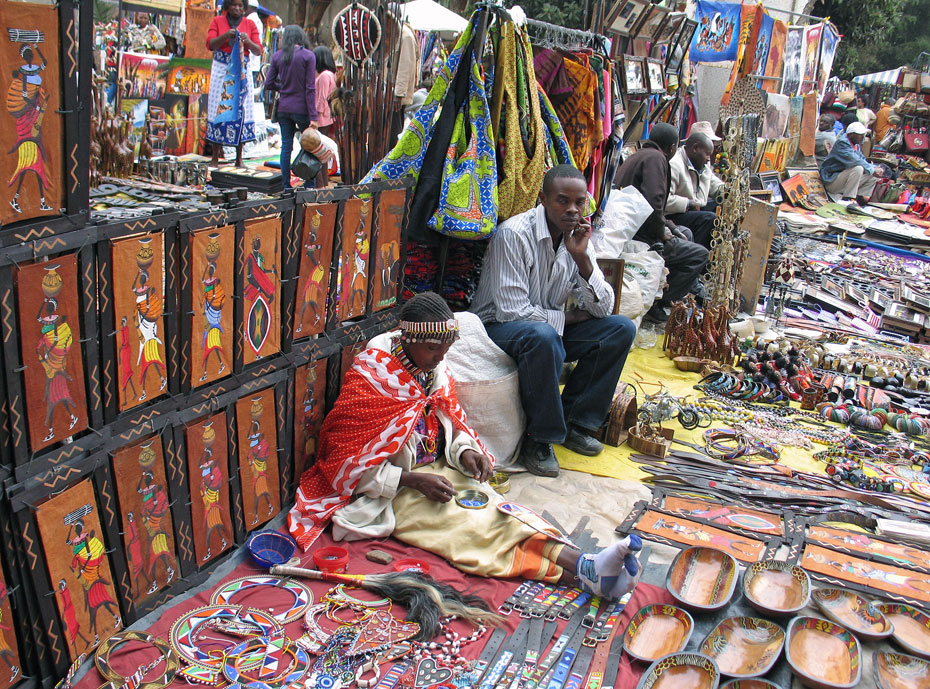
Nairobi is a modern African city with British colonial manners and a culture that emerges at pop up Maasai markets that require some negotiating skill
By Susan McKee
Tourists landing at Jomo Kenyatta International Airport too often are focused on starting their safaris in Kenya, and seldom take the time to see what Nairobi has to offer. The country’s capital city, home to close to 5 million, is worth a week to explore.
Unlike many of the important cities in Africa, Nairobi isn’t an ancient settlement. It didn’t start as a market town or a crossroads on historic trade routes. The city is an accident of colonialism: a staging point on a railway project to link British East Africa’s Indian Ocean port with an inland hub.
One of the first tasks of empire is building transportation to move a conquered land’s resources to the coast, so the bounty can be shipped out to the home country. In East Africa, that meant building a railroad from the ancient port of Mombasa inland, all the way to Kampala (now in Uganda).
Nairobi (“the place of cool waters” in Maasai) was set up in the mid-1890s as a supply depot at Mile 237 of the Uganda railroad. The city grew as a British administrative center and became the starting point for big game hunters from Europe and the United States to set out on safari. Since independence in 1963, it’s been the capital of Kenya.
Many of the city’s elegant hotels date from this period, including the Stanley (now a Sarova Hotel), opened in 1902, and the Norfolk (now a Fairmont Hotel), built in 1904. The Stanley is famed for its airy Thorn Tree Room. When the town was just a colonial outpost, people attached messages for others to the thorn tree there — dubbed the “original post office of Nairobi”. It’s the first place a newcomer would check for news.
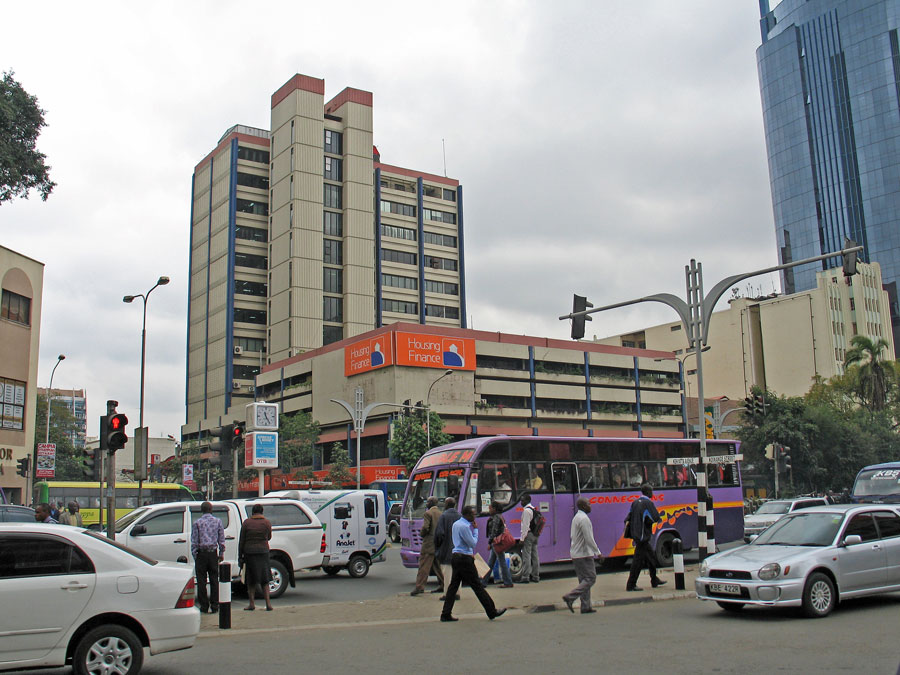
Nairobi’s Central Business District bustles during the day, but people who work there can commute to areas on the city fringe where wild animals still roam.
These days, it’s not the British running the rails. The government of China is heavily involved in rebuilding the original railroad as part of its “One Belt, One Road” initiative, a multi-trillion-dollar series of infrastructure projects upgrading land and maritime trade routes across Asia and Africa. The effort is controversial, both due to the Chinese involvement, and to service decisions. Before reconstruction, the train between Mombasa and Nairobi ran twice a day, making 46 stops, ferrying commuters and local produce. Now there’s one train a day making just six stops.
Tucked at the end of a dusty road leading off from the main train station, the National Railway Museum gives a glimpse of how it used to be. There are more than a dozen engines from various regional railways plus some train cars — including those featured in the movie “Out of Africa”.
The National Museum of Kenya, a showcase of both the archaeology and culture of Kenya atop Museum Hill, gives an overview of the country’s history from prehistoric to contemporary.
Reproductions of the significant anthropological finds in the country — a 2.5 million-year-old Homo erectus skull, for example — are on display not far from a room full of taxidermied birds that is nothing short of astonishing. (A gallery tour is online.)
If you’re a birder – especially if your upcoming safari focuses on feathered creatures – you’ll want to spend hours checking out the more than 1300 exemplars of virtually every bird found in East Africa.
Another niche interest: Joy Adamson. A gallery is devoted to the Czech-born naturalist, artist and author that spotlights Elsa, the lioness whose life was chronicled in Adamson’s “Born Free”, a best-seller published in 1960 that boosted global interest in African wildlife conservation.
Of particular interest to Americans? The wall quilt on display honoring President Barack Obama.
The museum’s small gift shop has representative craft items from around the country, as do the independently owned shops in a sort of mini mall outside the entrance.
Two more good reasons to linger in Nairobi? Elephants and giraffes. Yes, you’ll see them on safari, but you can touch them in the capital.
Get a ride to the David Sheldrick Wildlife Trust early enough to arrive well before 11 a.m. Then, just follow the crowd through the parking lot, pay your admission, and line up around the pen to watch the baby elephants during the one hour per day they’re on view.
Orphans all — mostly because poachers are still shooting African elephants for their ivory — these adorable creatures are the lucky ones who’ll grow up in safety, and then be released into the wild. Get up close and personal with one of these little fellows, and you’ll never touch anything ivory again.
For the long-necked showstoppers, head to the Giraffe Center. The gentle giants at the Africa Fund for Endangered Wildlife Kenya Ltd. (as the giraffe center is formally known) are anxious to make your acquaintance — if you’ve got food pellets in your hand, that is.
The pellets are handed out to visitors who’ve mounted the steps to the platform overlooking the expansive preserve. Hold your hand out over the railing, and a giraffe will amble over to nibble the goodies from your palm. Place a pellet between your teeth, lean over the railing and — yes: you’ll get a giraffe kiss.
Your visit helps support the work of the Africa Fund, including this breeding facility for the endangered Rothschilds, one of many subspecies of giraffe.
For a taste of what you’ll experience on safari in the remote regions of Kenya, hire a guide and driver to take you to the Nairobi National Park. It’s less than10 miles from downtown, and you’ll see lions and wildebeest and rhinos and more. Tip: get there just before dawn, when the animals are likely to be up and about. As the sun rises, they return to the bush to drowse during the day.
Anyone who’s seen “Out of Africa”, the blockbuster 1985 movie starring Meryl Streep and Robert Redford will want to visit Karen – a district of Nairobi said to be named for the Danish author known as Karen Blixen. The house she and her husband lived in at the foot of the Ngong Hills is now a museum.
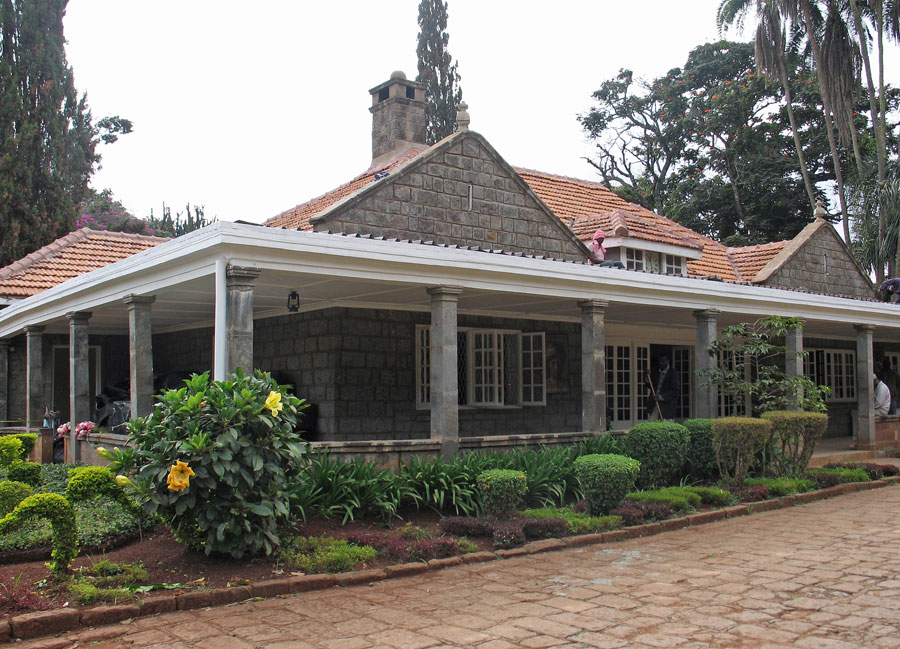
Remember the movie Out of Africa with Robert Redford and Meryl Streep? The house where Streep’s character, Karen Blixen, lived still stands and is now a museum.
Not far is another Karen landmark: Kazuri Beads, which demonstrates that native crafts don’t have to mean endlessly copying the arts of the past. At Kazuri, women work in clay to turn out colorful contemporary beaded jewelry, tabletop items, and small animals for both domestic and international markets. Each piece is handmade, and hand decorated.
Kazuri was founded in 1975 by British expat Susan Wood as a small workshop in her backyard garden fashioning handmade beads (kazuri means “small and beautiful” in Swahili). Her first two employees were single mothers, and she quickly realized there were many more such women who needed jobs.
Owned by Regina Newman since 2001, Kazuri provides an on-site medical clinic and other social services for its otherwise disadvantaged employees. It has grown to employ more than 400, and its products are sold in at least 30 countries worldwide.
A visit includes a guided tour through the workshops where you’ll watch the women shape and glaze the beads and other items using clay from the Mount Kenya area. Then, when you enter the adjacent shop, you’ll better understand the hours of work that go into producing the beads, which come in a variety of styles and seemingly endless colors from neutral whites, blacks and beige to riotous yellows, reds and purples. Some are single hues; others have dots or stripes squiggles. Some have an elegant iridescent sheen or a touch of gold. They’re strung in a multitude of patterns and hung in color families in the shop.
My favorite souvenir of Kenya is a coffee mug from Kazuri emblazoned with a lion’s paw print.
Art lovers should also stop by the Matbronze Wildlife Art Gallery and Foundry when in Karen. The gallery features creations by Denis Mathews, who works primarily in bronze. While there are some small items (I bought some lost-wax-cast buttons with the imprint of a lion’s paw), most of his items are massive in scale (think: elephant) and in the several thousand-dollar price range. I was (briefly) tempted by the life-size crocodile, which certainly would stop traffic in the States.
On your way to or from Karen drop into the Kitengela Hot Glass Studios, which is not in the neighborhood, but is nearby. This venture was started in the early 1990s by Anselm Croze, who trained in the Netherlands with glass masters Willem and Bernard Heesen.
Glassmaking isn’t common in east Africa, but Croze improvised a glass studio in Nairobi. He and a Finnish glassblower named Mikko Merikallio, who was also a furnace-builder and inventor, devised their own furnace for Kitengela, creating a steam-injected system that utilized recycled engine oil for fuel — no electricity involved.
Croze now employs three dozen people to produce a variety of hand-blown glass items, including the elegant salt cellars and candle holders on tables in the top restaurants of Nairobi (including those in Fairmont The Norfolk Hotel).
Another great place to shop is one of the pop-up Maasai markets in Nairobi. My favorite was the Friday edition at the Village Market — an upscale shopping mall in the Gigiri neighborhood of Nairobi — but there are Maasai markets somewhere in Nairobi every day of the week except Monday. Hours at each are 8 a.m. to 7 p.m. Many of the artisans who make the items are sitting there working on their next creation in between talking to potential customers.
Appliquéd cloth, beaded jewelry, painted wooden birds, elegant sandals “antique” masks, napkin rings with animal motifs — it’s all here, including yardage of the distinctive plaids of Maasai shuka, the cultural cloth of the tribe. You have to bargain because nothing has a price tag.
It’s always a good idea to do a bit of comparison shopping before loading up on souvenirs to bring home, and there are lots of African carvings, Maasai textiles, and beaded necklaces from which to choose.
Wandering downtown, you’ll see businesses are geared more toward the clerks and officials who work there — think office supply stores, dry cleaners and banks — but there are a few places to indulge in a bit of retail therapy.
Browse the storefronts along Biashara Street, check the art galleries especially on Kaunda and Standard streets, and consider the options at the Zanzibar Curio Shop on Moi Avenue, which has a good selection of traditional crafts at reasonable (and fixed) prices.
And, of course, there’s the food. As befits a world capital city, you can find restaurants throughout Nairobi specializing in every cuisine imaginable. Best known, of course, is Carnivore in Langata.
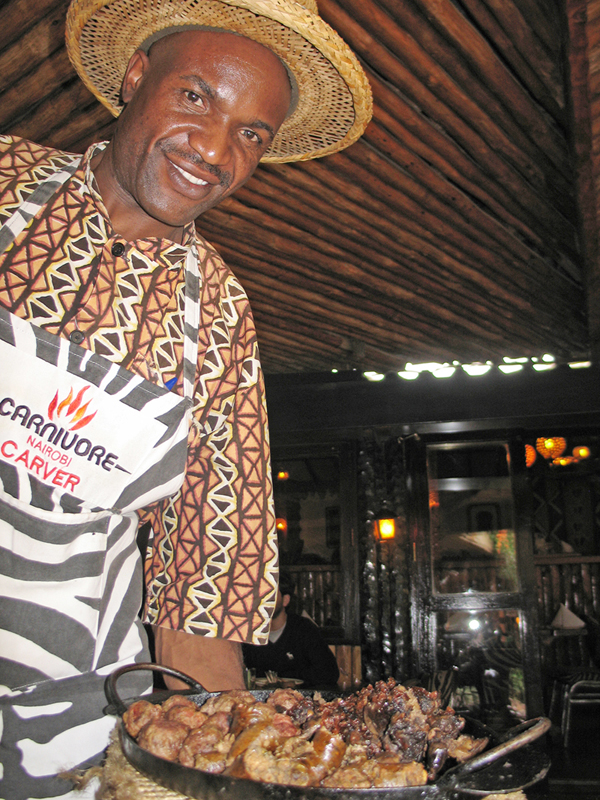
The Carnivore restaurant offers camel and crocodile but, fear not, there’s also plenty of beef and pork. And salads, too.
The stuff of legends, it’s been feeding locals and tourists since 1980. In the beginning, they really did have rare exotic meats (think: zebra and lion). Tastes and mores have changed, however, and the fare is not quite as wide-ranging — but really, where else can you dine on crocodile tail, camel hump, and ox balls? The meats are sliced and served tableside. It’s “all you can eat” — the servers keep coming with skewers of new offerings until you signal you’re sated. Everything is roasted on traditional Maasai swords over a huge charcoal pit that dominates the entrance of the restaurant.
You can imagine yourself in colonial East Africa when partaking of a meal at the Talisman Restaurant. Sit back on a pillow-festooned couch next to the fireplace or take a seat at a table in the garden at one of the best eateries in Nairobi.
The Talisman is a favorite with expats and tourists alike (but, thankfully, seems to have avoided the tour bus crowds). The menu changes frequently, and there’s a reasonable wine list.
Kenya grows some of the best coffee in the world, so even though its heritage is that of British tea drinkers, there are many places to sample local beans.
Artcaffé is one of the top three coffeehouse chains in Kenya (the other two are Java and Dormans). It’s probably the most “upscale” of the trio, placing its outlets in high end shopping malls. It prides itself not only on its range of coffees, but the chain bakes its own breads and pastries, promising fresh selections daily.
It’s one of the few places in Nairobi outside a five-star hotel that you can order eggs Benedict and be assured that what’s presented will look familiar to Western eyes. They’ve also got a range of pizzas and burgers (including veggie, beef, chicken and lamb versions). In fact, the menu is one that wouldn’t be out of place in Europe or the States.
Like a little kick with your nosh? This is a coffeehouse that serves cocktails. What about a mimosa with brunch on the weekend? The daiquiris come in mango, pineapple or strawberry. If beer suits your sandwich, there’s everything from Tusker to Heineken to Guinness. The drinks menu also includes wine by the glass or bottle, rum, whisky…most anything you’d find in a bar. (And, in Kenya, the drinking age is 18.)
Artcaffés can be found in Westlands Mall, the Junction Mall, Galleria Shopping Mall in Karen, and the Village Market Mall in Gigiri. Inside each Artcaffé is an Art Bakery Bread Shop, where you can buy some of their fresh-baked specialties to take away.
Now for some essentials:
Languages: English is one of the country’s two official languages (the other is Swahili). However, an estimated 60 different languages are spoken in Kenya.
Daylight: The equator cuts right through Kenya, so expect days and nights to be almost exactly 12 hours each year ‘round. That means the sun comes up at 6 a.m. and darkness descends at 6 p.m.
Weather: Nairobi, because of its altitude, is cooler than you’d expect at the equator. Especially in the evening, the city can get a bit chilly, so you’ll want to bring a light jacket or sweater. The climate is, technically, subtropical highland. Expect highs around 77F (25C) December through March, and highs around 72F (22C) June through August. There are also two rainy seasons peaking in April-May, and again in November-December.
Money and banking: You’ll need Kenyan Shillings (KES) for most casual purchases in Nairobi. Although businesses catering to tourists (including hotels, resorts, restaurants and the larger souvenir shops) will usually take credit cards, cash is especially useful when bargaining with market vendors or paying taxi drivers. You can easily get KES by going to an ATM at one of the banks in the central business district. (Note: in Nairobi, the CBD abbreviation means central business district, not cannabidiol.)
Health and Safety: The rules for avoiding petty theft are the same in Nairobi as they are anywhere else you might go in the third world. Be aware of your surroundings and don’t flaunt money or pricey possessions. Seriously: leave those armloads of gold bangles at home, and don’t carry a designer handbag. There are pickpockets, of course, but many a tourist has had a gold chain yanked from her neck. During the day the touristed areas are OK to walk around in, but at night, take taxis.
Transportation: Taxis are plentiful from the airport and within the central business district. They don’t operate on a metered system, so make sure you get a quote from the driver before getting in. Ask the doorman at your hotel to call you a taxi – they have favorite drivers who can be relied upon to ferry you safely and expeditiously, and if you negotiate the price while the doorman is listening you can be sure the cab driver will not ask for more.![]()
Writer and photographer Susan McKee travels the world from her base in Indianapolis, Indiana


